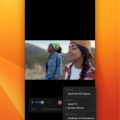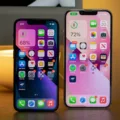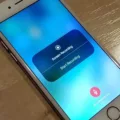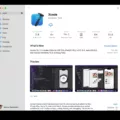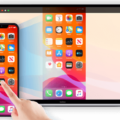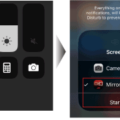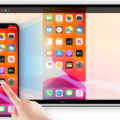QuickTime Player is a versatile application that comes pre-installed on Mac computers. While it is commonly used for playing videos and audio files, it also offers the useful feature of screen mirroring, allowing you to display your iPhone or iPad screen on your Mac. This can be particularly handy for various purposes, such as presenting content to a larger audience or recording your iOS device’s screen for tutorials or demonstrations.
To mirror your iPhone or iPad screen to your Mac using QuickTime Player, follow these simple steps:
1. Begin by connecting your iOS device to your Mac using a Lightning-to-USB cable. Make sure the cable is securely plugged into both devices.
2. Once your devices are connected, open the QuickTime Player application on your Mac. You can easily find it in your Applications folder or by using Spotlight search.
3. In the QuickTime Player menu bar at the top of your screen, click on “File.” A drop-down menu will appear, and from there, select “New Movie Recording.”
4. A new window will pop up, and by default, it will show your Mac’s built-in webcam. To mirror your iOS device’s screen, click on the small downward-facing arrow next to the record button in the recording window. From the drop-down menu, select your iPhone or iPad as the camera source.
5. After selecting your iOS device, you will notice that your iPhone or iPad screen is being mirrored on your Mac. You can now use your iOS device as you normally would, and its screen will be displayed on your Mac in real-time.
6. If you wish to record your screen, you can do so by clicking on the record button in the QuickTime Player window. This will start recording everything that appears on your iOS device’s screen. To stop recording, simply click on the stop button.
That’s it! Now you can easily cast your iPhone or iPad screen to your Mac using QuickTime Player. It’s worth noting that both your iPhone/iPad and Mac need to be connected to the same Wi-Fi network for this feature to work.
QuickTime Player provides a convenient solution for screen mirroring, allowing you to effortlessly display and record your iOS device’s screen on your Mac. Whether you need to showcase a presentation or create instructional videos, QuickTime Player’s screen mirroring feature can prove to be a valuable tool. Give it a try and take advantage of the seamless connection between your iPhone/iPad and Mac.
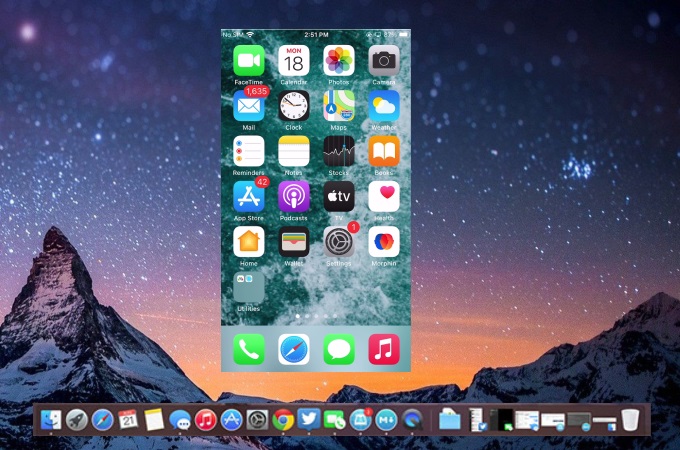
How Do You Mirror Your iPhone to Your Mac Using QuickTime?
To mirror your iPhone screen to your Mac using QuickTime Player, follow these steps:
1. Connect your iPhone to your Mac using a Lightning-to-USB cable.
2. Open the QuickTime Player application on your Mac. You can find it in the Applications folder or use Spotlight to search for it.
3. In the QuickTime Player menu bar, click on “File” and select “New Movie Recording”. Alternatively, you can use the keyboard shortcut “Command + Option + N”.
4. A new movie recording window will open. By default, it will use the built-in FaceTime camera for recording, but we need to change it to mirror your iPhone screen.
5. Click on the small arrow next to the red record button in the movie recording window. This will open a drop-down menu with various options.
6. From the drop-down menu, select your iPhone as the camera source. It should be listed under the “Camera” section as your iPhone model name.
7. Once you select your iPhone as the camera source, your iPhone screen should start mirroring on your Mac. You will be able to see your iPhone’s screen displayed in the movie recording window.
8. If you want to record your iPhone screen, you can click the red record button in the movie recording window to start recording. To stop recording, click the stop button in the menu bar at the top of the screen.
That’s it! Your iPhone screen is now mirrored on your Mac using QuickTime Player. You can use this feature to display your iPhone screen on a larger screen for presentations, demos, or to simply view your iPhone content on a Mac.
How Do You Mirror a QuickTime Player?
To mirror the QuickTime player, follow these steps:
1. Launch QuickTime Player on your Mac.
2. Click on “File” in the menu bar at the top of the screen.
3. Select “New Screen Recording” from the drop-down menu.
4. A small recording window will appear on your screen. You can move this window to the area you want to mirror.
5. To mirror the entire screen, click on the arrow next to the record button in the recording window and select your Mac’s display from the list.
6. To mirror a specific portion of the screen, click and drag to select the desired area.
7. Once you have selected the area, click the record button in the recording window to start mirroring.
8. Perform the actions you want to mirror on your screen.
9. To stop mirroring, click on the stop button in the menu bar at the top of the screen or press the “Command + Control + Esc” keys on your keyboard.
10. The mirrored recording will be saved as a video file in the location specified in your QuickTime Player preferences.
Note: QuickTime Player can mirror your screen, but it does not have built-in screen recording capabilities. To record the mirrored screen, you can use third-party screen recording software or the built-in screen recording feature on macOS Mojave or later.
Can You Share Your iPhone Screen With Your Mac?
It is possible to share your iPhone screen with your Mac. To do this, follow the steps below:
1. Ensure that both your iPhone and Mac are connected to the same Wi-Fi network.
2. On your iPhone, open the Control Center. This can be done by swiping down from the top right corner on newer iPhone models or swiping up from the bottom on older models.
3. In the Control Center, look for the “Screen Mirroring” option. This may also be labeled as “AirPlay” on some devices.
4. Tap on the “Screen Mirroring” option. A list of available devices to mirror your screen to will appear.
5. From the list of devices, select your Mac. It should be listed with its name.
6. If prompted, enter the passcode displayed on your Mac to establish the connection.
7. Once the connection is established, your iPhone screen will be mirrored on your Mac’s display.
By sharing your iPhone screen with your Mac, you can easily view and interact with your iPhone’s screen on a larger display. This can be useful for activities such as giving presentations, demonstrating apps or games, or simply viewing your iPhone content on a bigger screen.
Please note that this feature requires both devices to be connected to the same Wi-Fi network. Additionally, not all Mac models support screen mirroring, so make sure your Mac is compatible before attempting to connect.
Conclusion
QuickTime Player is a versatile and powerful tool that allows you to cast your iPhone screen to your Mac computer. By simply connecting your iOS device to your Mac using a Lightning-to-USB cable, you can easily mirror your iPhone or iPad display on your Mac screen.
QuickTime Player offers a seamless and convenient solution for sharing your iOS device’s screen with others or capturing screenshots and recordings for various purposes. With just a few clicks, you can start a new movie recording and have your iOS display mirrored on your Mac in no time.
This feature is particularly useful for presentations, demonstrations, or even just sharing content with friends and family. It allows you to have a larger and more detailed view of your iOS device’s screen on your Mac, making it easier to navigate, view, and interact with your apps, videos, or any other content.
Moreover, QuickTime Player also provides the option to connect wirelessly by ensuring both your iPhone and Mac are connected to the same Wi-Fi network. By accessing the Control Center on your iPhone and selecting the Screen Mirroring option, you can easily choose your Mac from the list of available devices.
QuickTime Player is a reliable and user-friendly tool that offers a convenient way to cast your iPhone screen to your Mac. Whether you need to share your iOS device’s screen for professional or personal reasons, QuickTime Player provides a seamless and efficient solution that is easy to use and delivers high-quality results.

